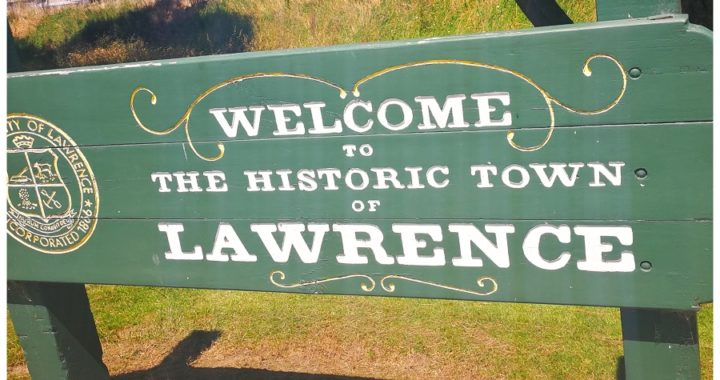When you travel through or around the Otago region, chances are, you will, or want to travel through Lawrence.
The township sits in the Tuapeka district. Click here to read our previous blog on Punting at Tuapeka Mouth.
With a population of around 500 permanent residents, it is conveniently located on SH8, the main route from Dunedin to the inland towns of Queenstown and Alexandra.

The small town of Lawrence and Gabriels Gully, just a short drive out of town
Because of its location, 92 km west of Dunedin, it is a popular stopover to break your journey.
It is very picturesque as it sits nestled in the beautiful Clutha countryside.
History of Lawrence
Well, where do I start!
In 1860, the town of Lawrence was the epicentre of the largest gold rush that the world had ever seen. Gold had been discovered at nearby Gabriel’s Gully by Gabriel Read (more on this later in the blog).
At the peak of the gold fever, its population bulged to over 11,000. This was twice the size of Dunedin at the time and the largest community in the country.
Just over 1 million ounces of gold was transported by horse-drawn wagons, all the way to Dunedin.
The town’s many Victorian and Edwardian buildings dotted around the township bears testament to the ‘golden era’.
Lawrence Information Centre & Museum
Located in the main street, the Lawrence Information Centre & Museum has a wealth of information and resources for visitors to the area. We called in for a visit and picked up several pamphlets and information booklets for the area and surrounds.
NB: Lawrence was one of the first towns in NZ to offer free WiFi which is available in the main street.
While visiting the Info Centre, we took some time to explore the Tuapeka Goldfields Museum which is located in the rear of the building.

So much to see in the small museum
It offered a fascinating insight into the region’s colourful and very busy history. There were displays and a variety of artifacts and remnants from those early mining days.

Displays and information on what went on in the bustling gold rush days of the 1860s
There were plenty of examples of what life was like. We spent quite a while wandering around the wide range of exhibits, the gold mining display and old farming equipment.
Another Claim to Fame
Lawrence is also where a local school teacher composed the music for NZ’s national anthem back in 1876. He is buried in the town’s hilltop cemetery. The cemetery is well worth a visit as it’s known for great examples of Victorian ironwork and Celtic crosses. There is also a Chinese section where many of the deceased Chinese miners and their family are buried (more on this later in the blog).
Lawrence’s Main Street
The small main street of Lawrence is lined with boutique shops, a collection of cafes and galleries.
We were spoilt for choice when it came time for a coffee, ice cream, cold beer/wine and to top-up groceries from the local supermarket.
There was plenty of time for us to pop into some of the shops as we wandered around, getting a feel for the town.
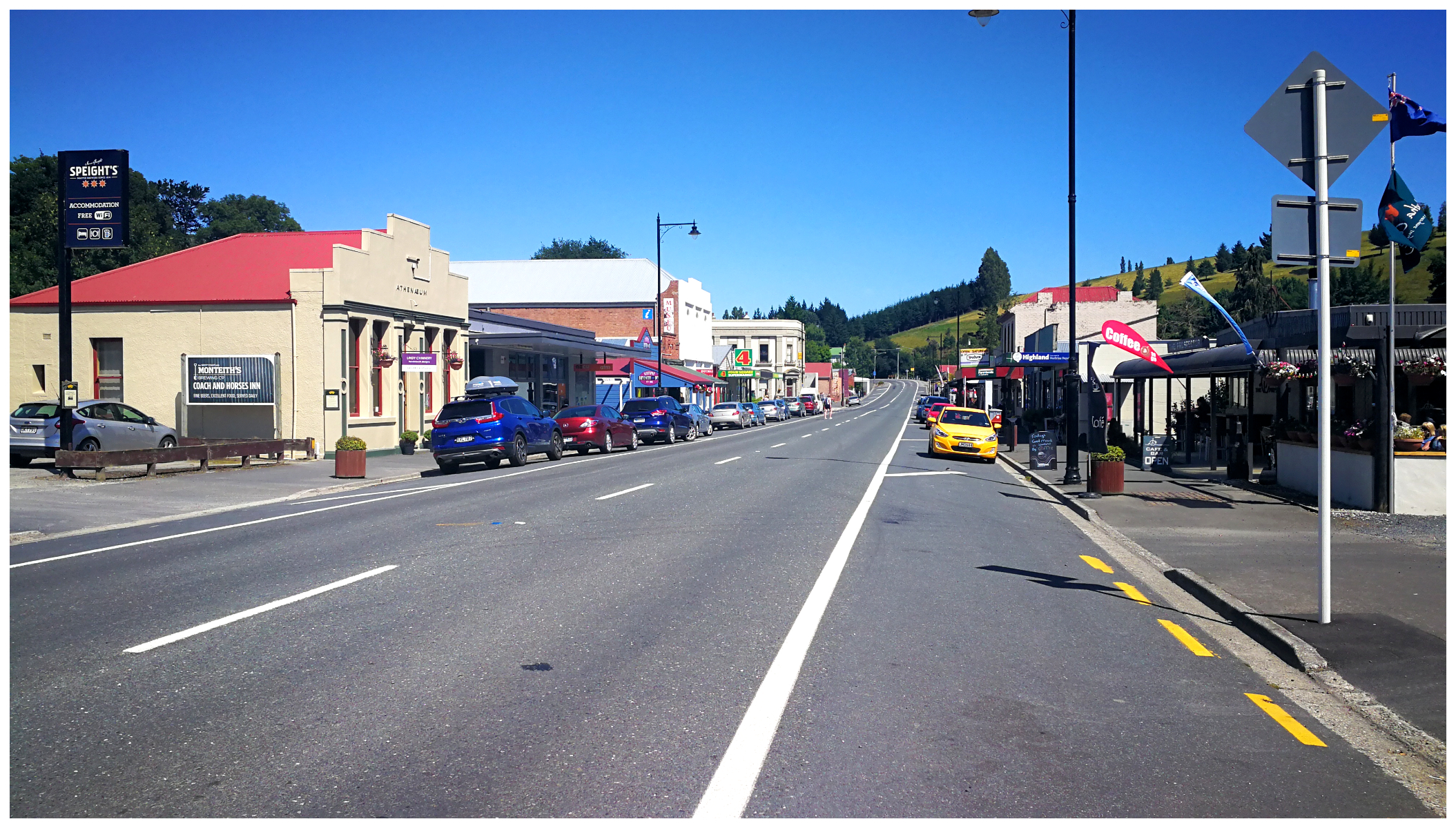
The main drag of Lawrence may not be big but it’s a treasure trove of shops
The Lawrence Mint Chocolate & Cake Shop
The Mint Chocolate & Cake Shop was a popular place by the look of the line up waiting to be served. The smell alone was an indication that they produce some pretty yummy morsels.
It may be small, but the counters and cabinets were full of Belgian chocolate, fudge, rocky road, cheesecakes, mud cakes and loads more.
The Vintage House
Another popular shop is The Vintage House. It’s packed with all sorts of trinkets, antiques, artwork and even vintage clothing. Libby, the owner is an experienced felt-maker. There were all sorts of goodies including felted hats, bags, scarves and wraps. I could have done some serious damage with a shopping spree but I kept control of the urges and carried on.
The Boat Shed Antiques
Quirky is a word that I would use to describe some of the retail shops. None more so than the second-hand shop located in the old Methodist Church at the far end of the main drag. It was an assault (in a good way) on the eyes and senses as there wasn’t one spare centimetre left as all sorts of items were stacked up ready for their owners to find them.
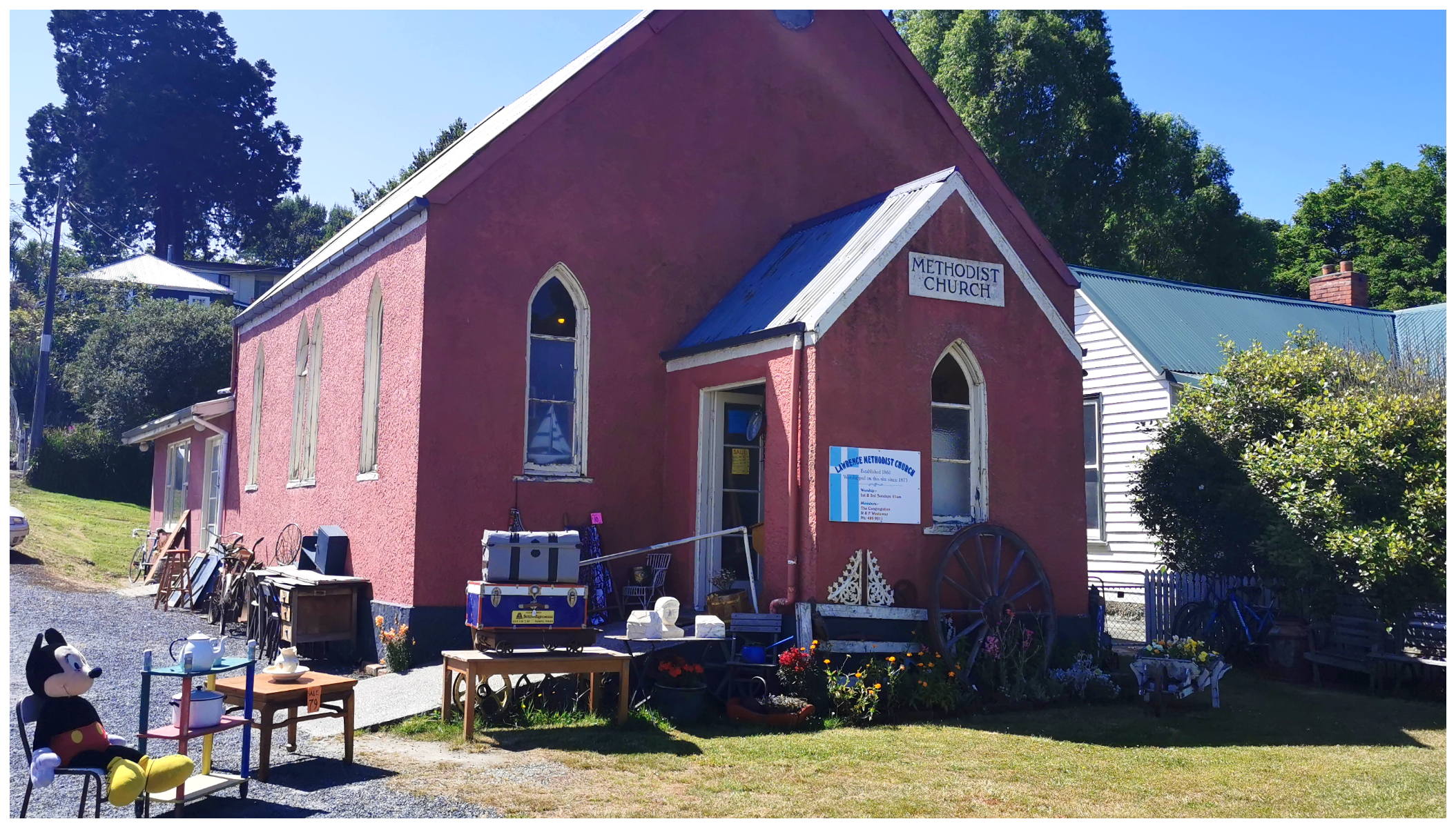
Yup, a bit confusing – The Boat Shed is located in the old church!
There is something in this shop for anyone with an interest in antiques and vintage items and for the collector of sporting memorabilia, particularly for rugby and rowing. There are many photographs of New Zealand rugby clubs as well as caps, jackets and other clothing.
Blue Spur Butchery
We’re always on the lookout for ‘small town’ butcheries. You know the type – the old school butcher shops that specialise in cuts of meat the way it used to be.
I had heard the rumours that the Blue Spur Butchery fitted this description so I was keen to visit to top up the freezer space in the caravan.
Owner Jan was among the first female apprentice butchers in NZ. She opened the Blue Spur Butchery in 2009.
She was certainly busy the day we popped in. A rather large order for 1,200 of her locally famous burger patties for the upcoming rodeo was going to be a challenge for her to fulfil.
If Jan’s patties were good enough for rodeo customers, then they were good enough for us. Oh, this is as well as a couple of packets of her traditional and old fashioned sausages.
Chinese Camp
Throughout the Otago goldfields, there was a steady flow of Chinese miners arriving from Southern China. Although they were separated from their families for many years, they regularly sent money back to their homeland. They lived with the hope of one day returning once they had made enough money.
With the sudden increase in the Chinese Miner population, a town was founded to accommodate them all just 1 km west of Lawrence. By 1883 the Chinese Camp consisted of 60-70 buildings which housed more than 125 workers.
The old camp is clearly signposted on the way into Lawrence with good off-street parking. It is also ideally located alongside the Clutha Gold Cycling Trail with a section of the trail running alongside the camp.
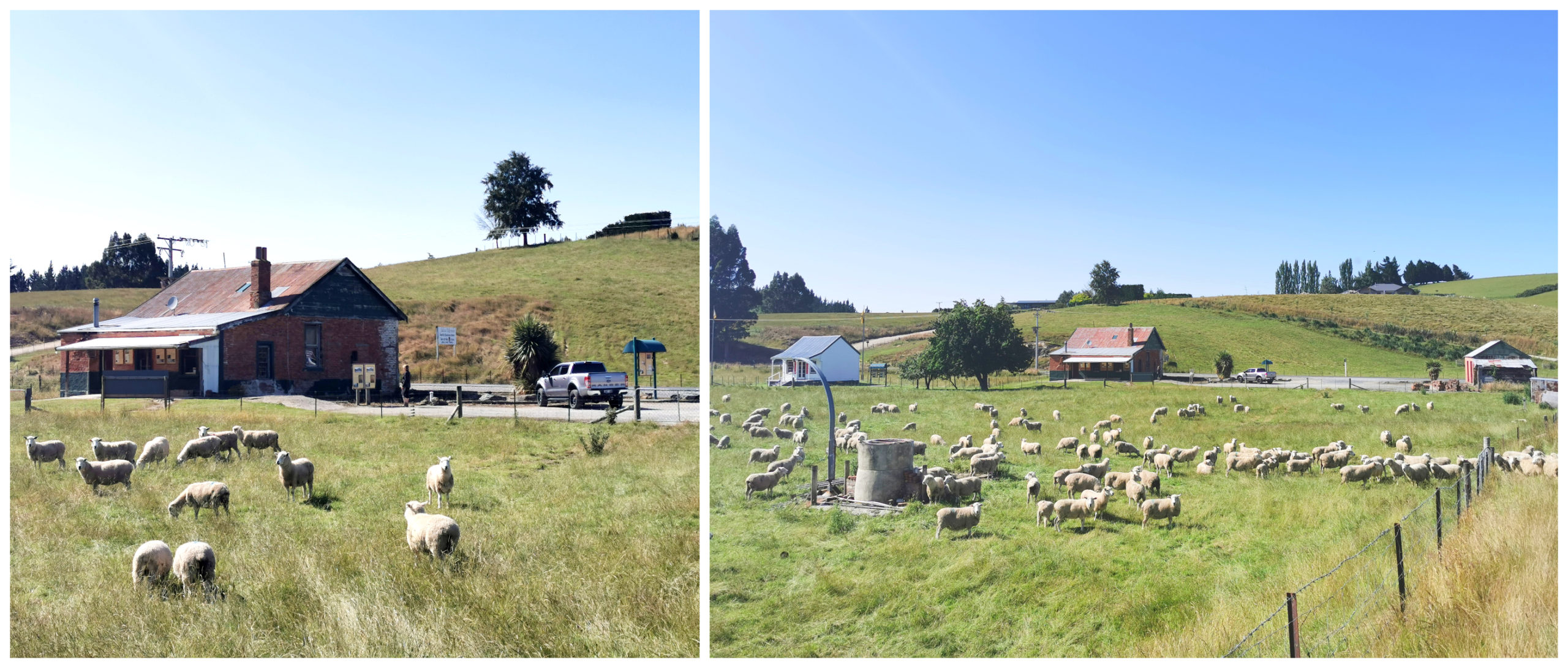
the view of the buildings taken from the cycle trail
We spent some time reading the information history panels, depicting what the town looked like and what life was like for the Chinese workers who called this their home.
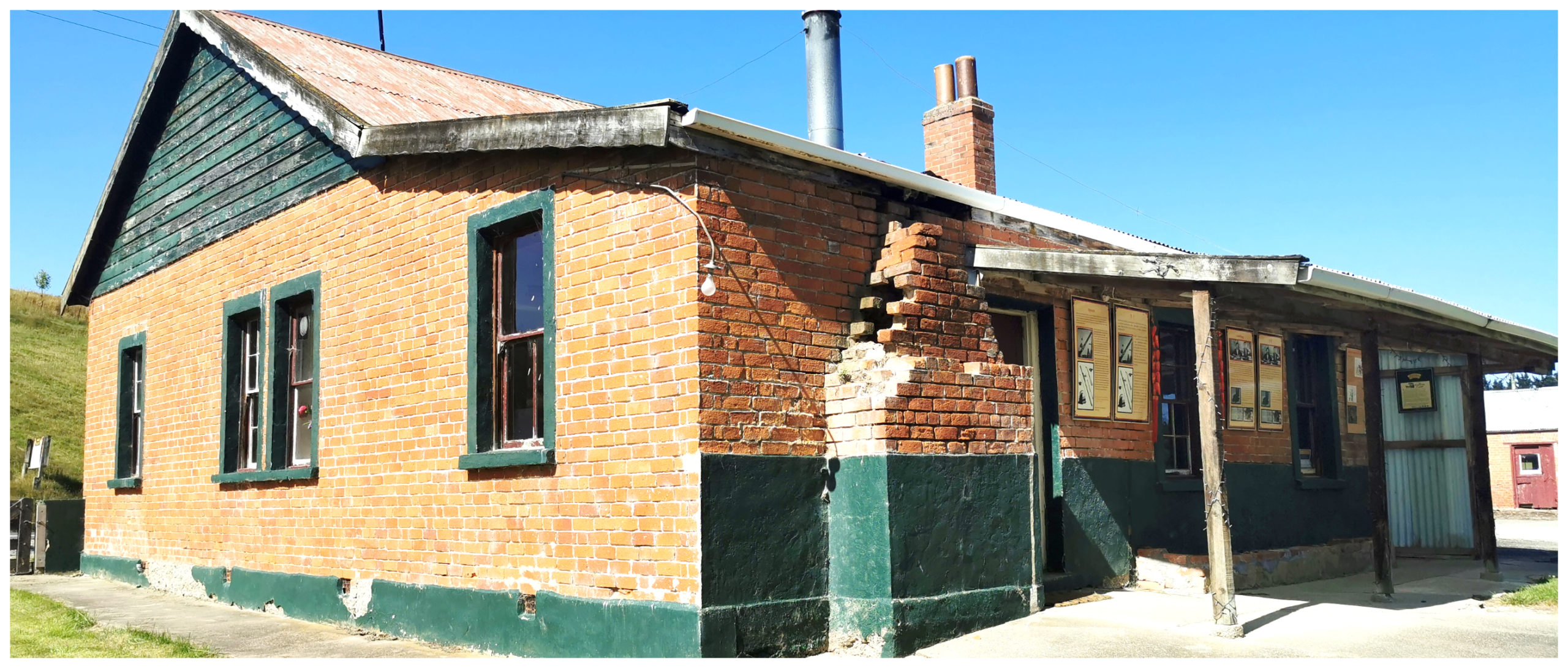
back view of the Empire Hotel (if only those walls could talk)
One of the few remaining buildings is the Empire Hotel (built 1884). It had the reputation of being one of the best hotels in Otago. It was visited by both European and Chinese clientele.
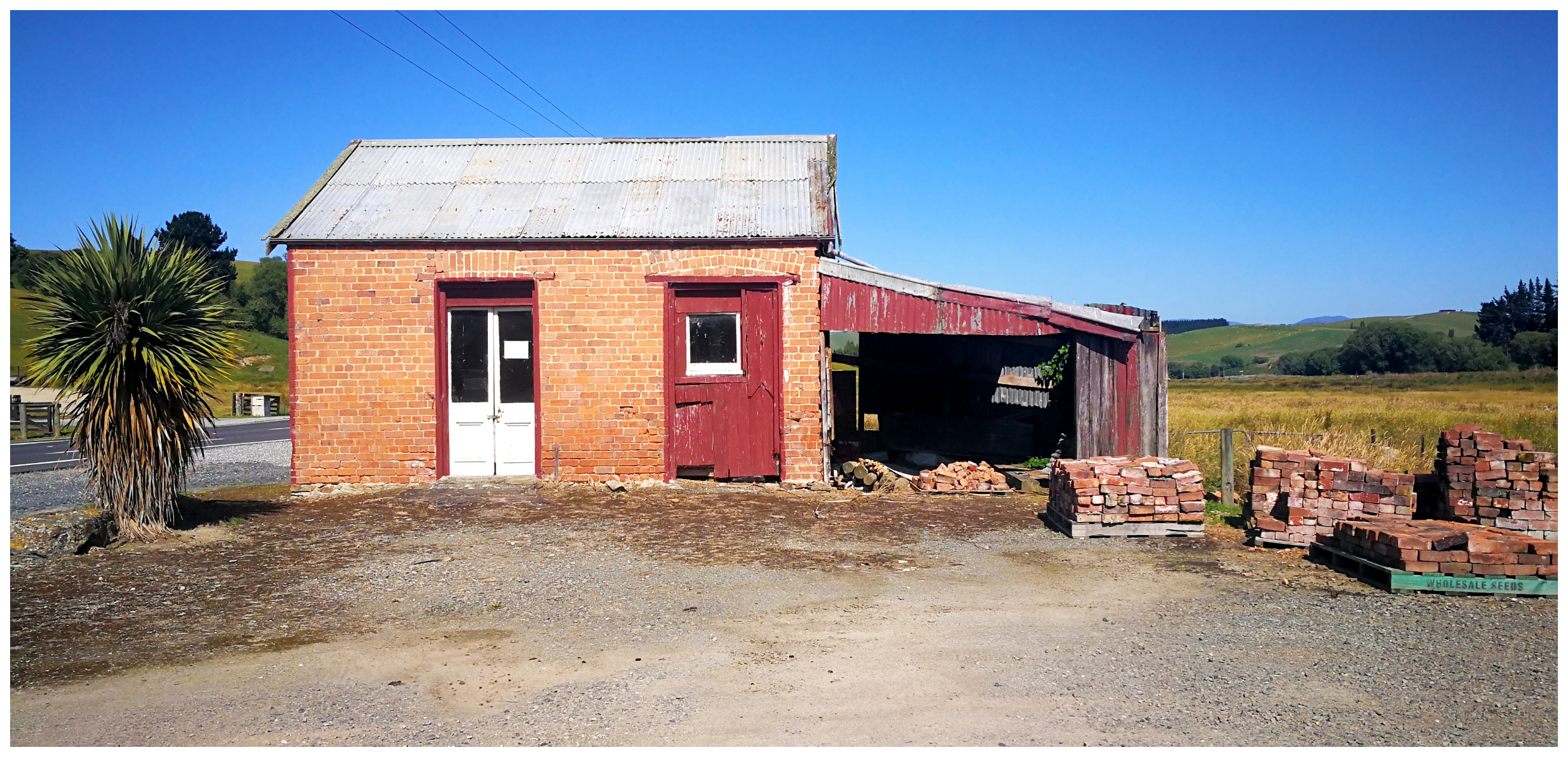
the hotel clients could rest assured that their horses were stabled whilst enjoying a cold beer at the hotel
Adjacent to the hotel is the stables which cared for the horses belonging to the hotel’s customers.
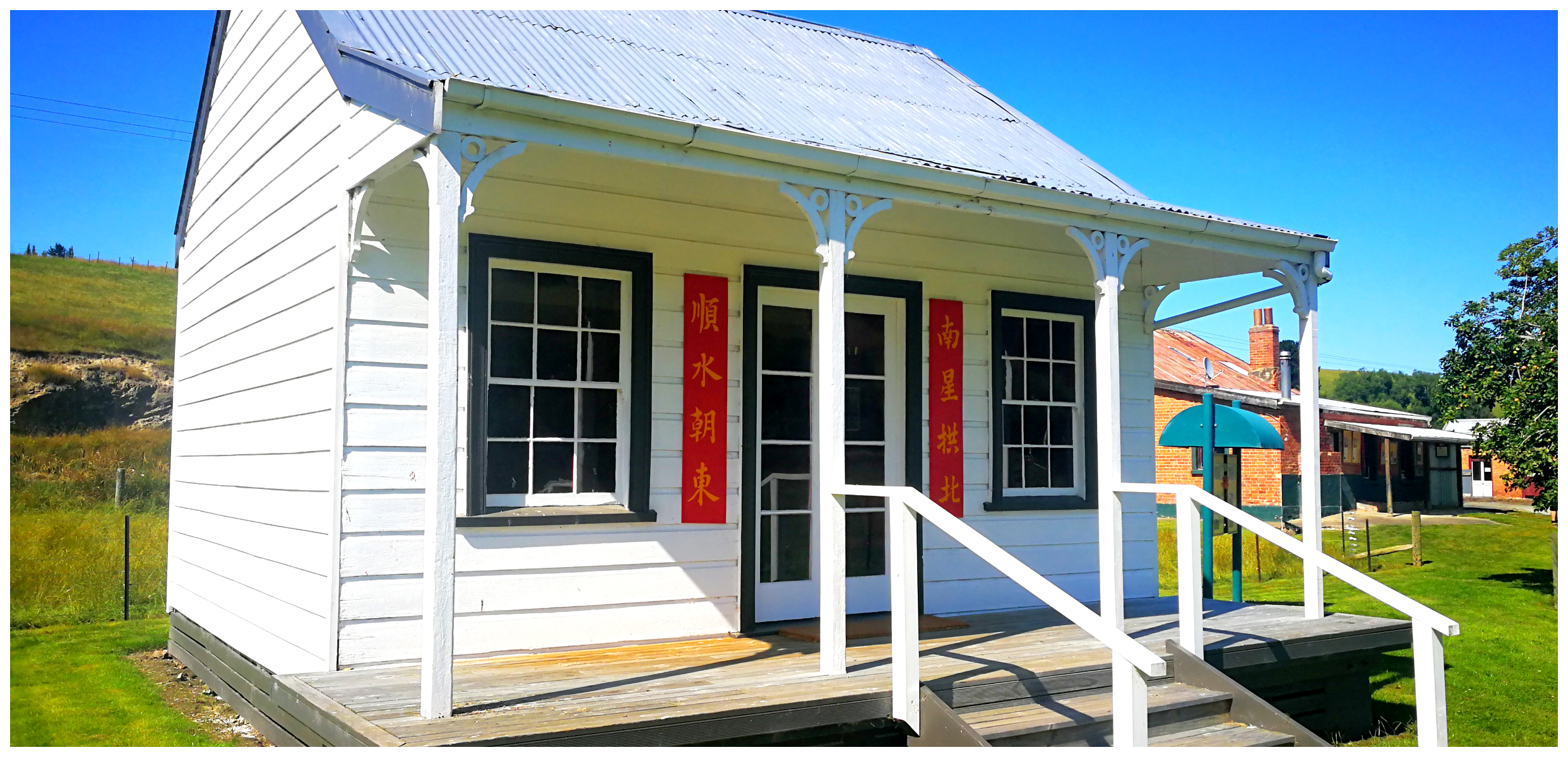
the newly renovated Joss House (temple)
The next building is an original Joss House (Chinese Temple). In 2017, it was moved back to its original position behind the hotel and lovingly restored. It had previously been moved into Maryport St, in Lawrence, in 1948. The Joss House was an important place for Chinese residents.
Gabriel’s Gully
As I mentioned earlier, Gabriel’s Gully is where it all began……the great Gold Rush that is.
Located only 4 km out of the main centre, Gabriel’s Gully was home to over 6,000 miners who were camped in the valley. This is also the area we chose to camp in too – albeit a lot more comfortable than they were back in the 1860s.
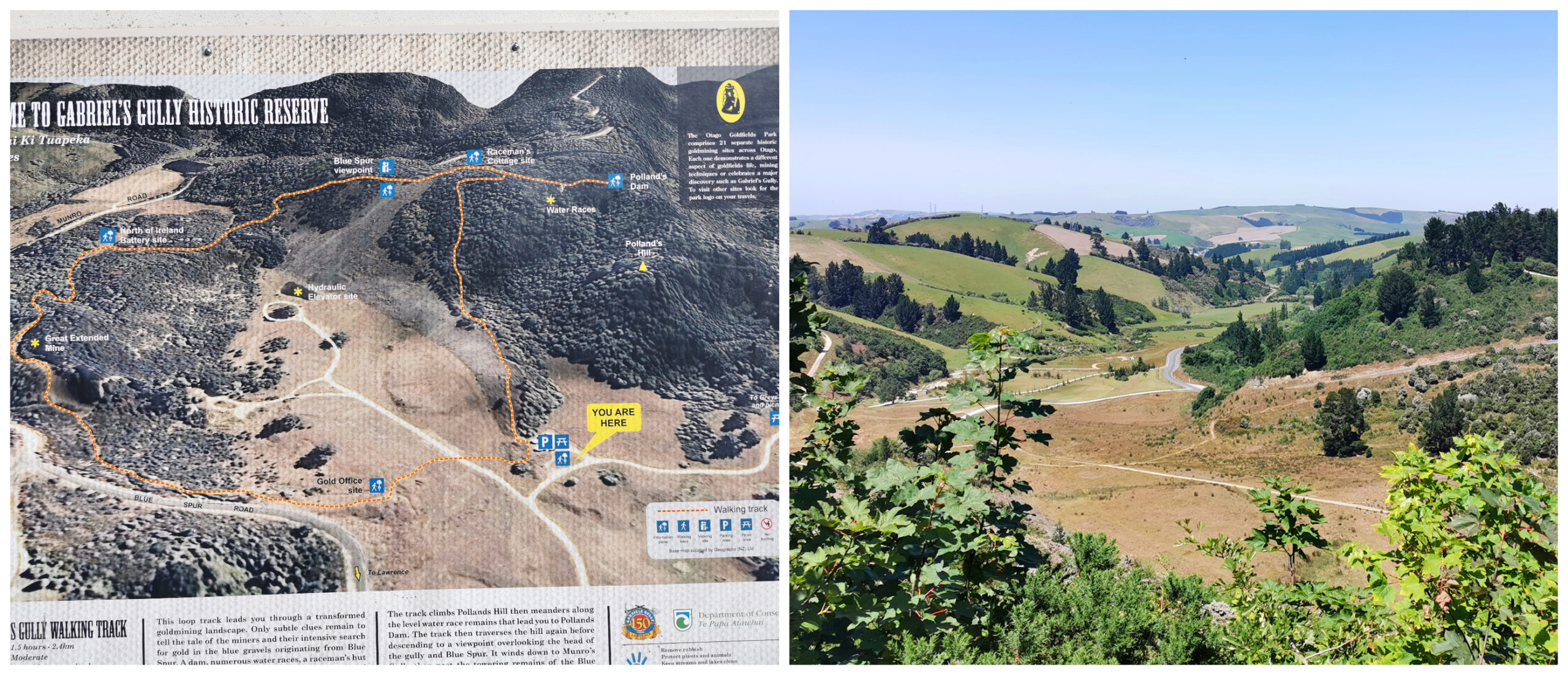
Just imagine what the gully looked like with 6,000 miners camping here
Greys Dam Lake
If you continue driving along the gravel road through the Gabriel’s Gully Historic Reserve, you will reach the free camping and picnic area beside Greys Dam Lake (NZMCA#8887).
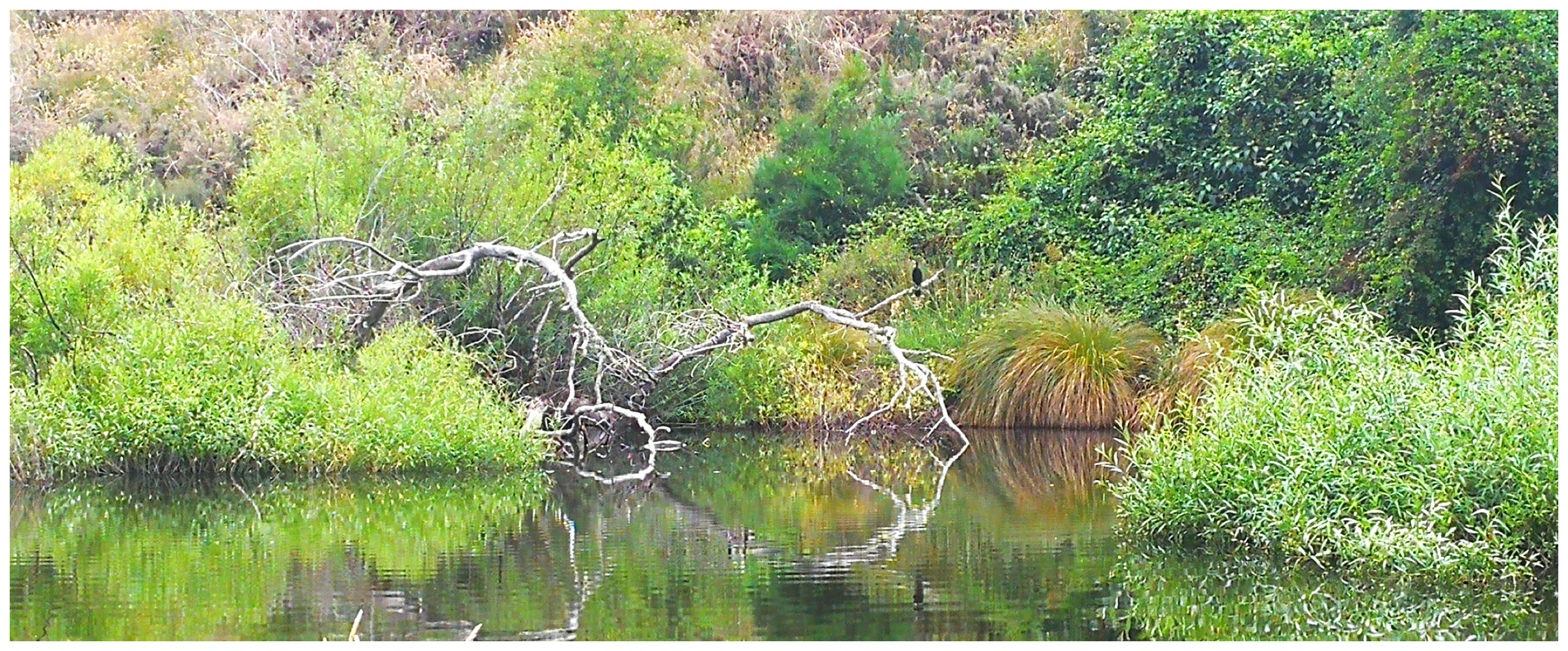
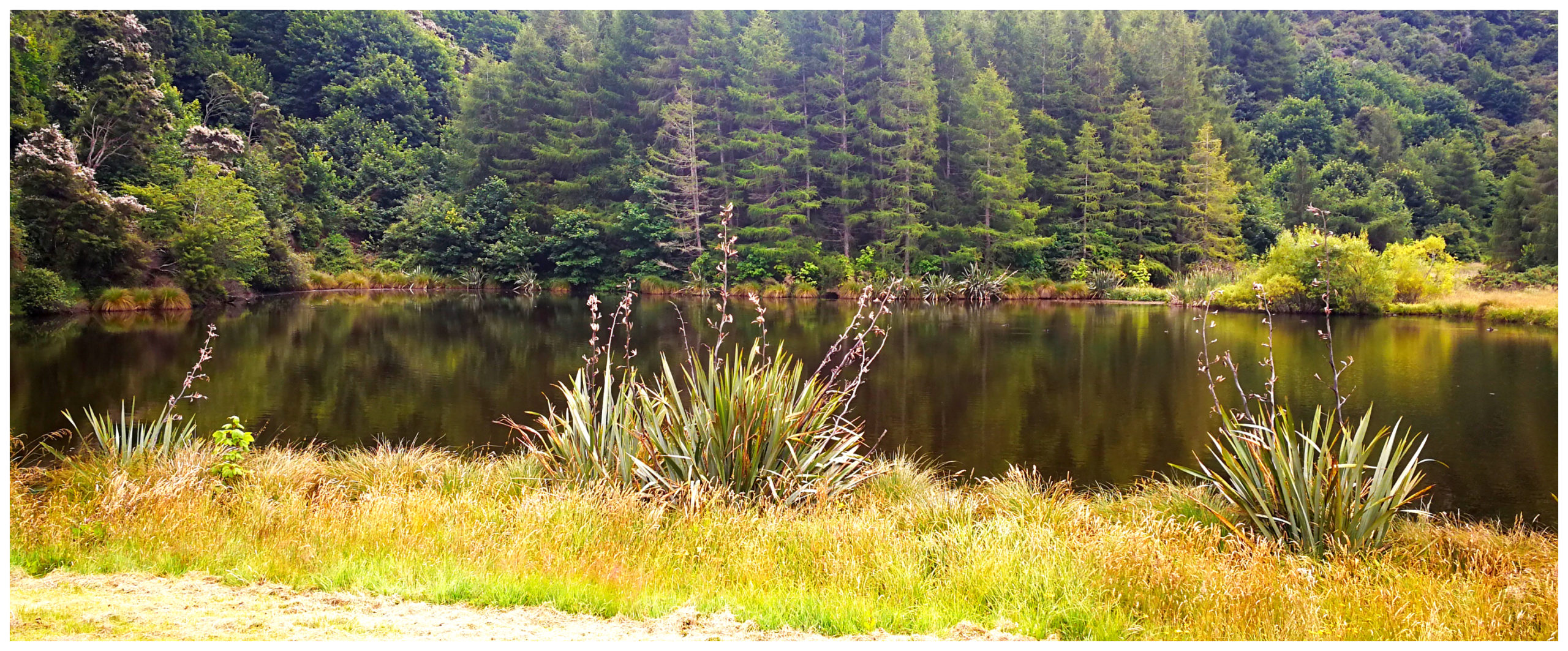
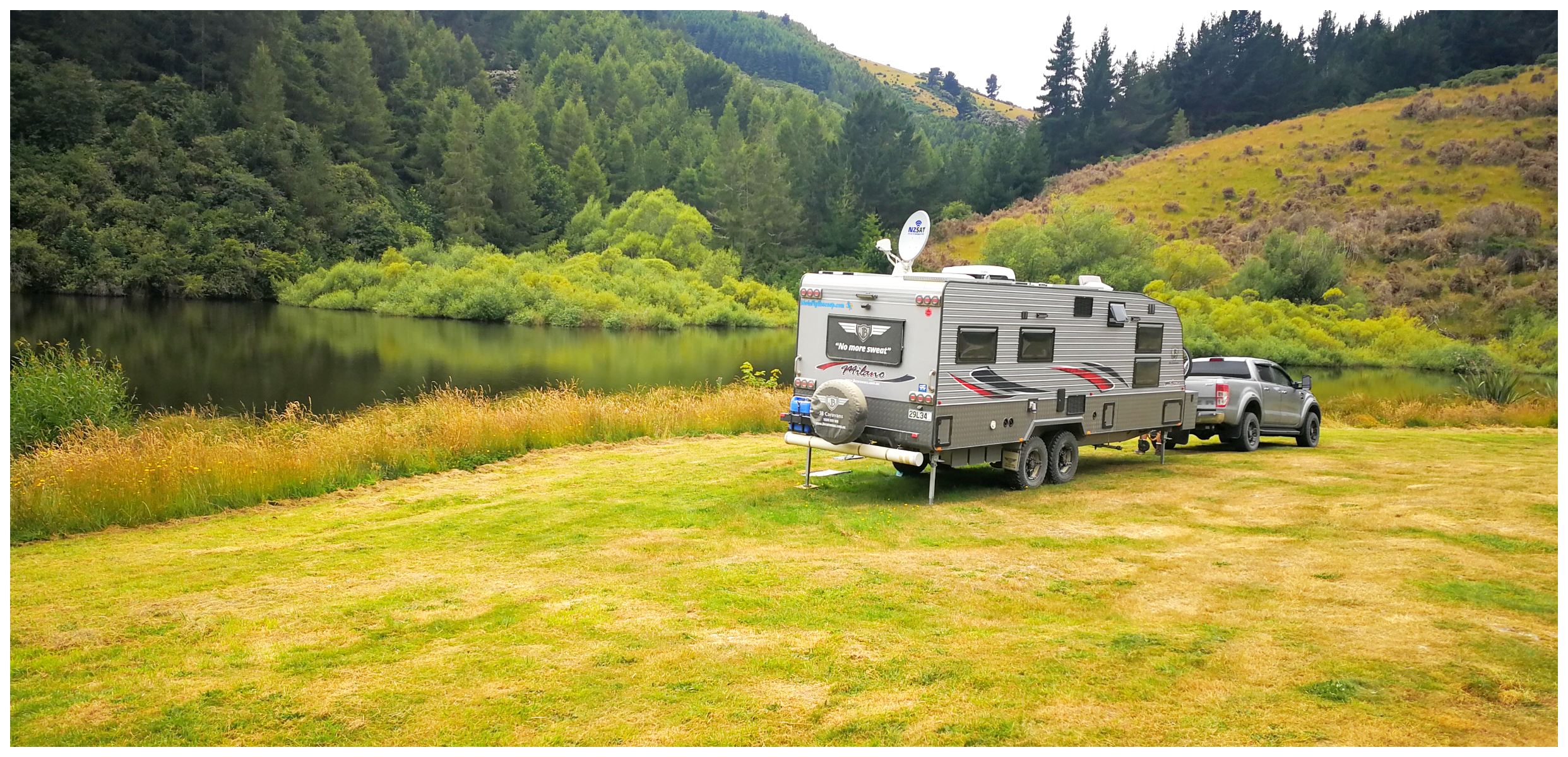
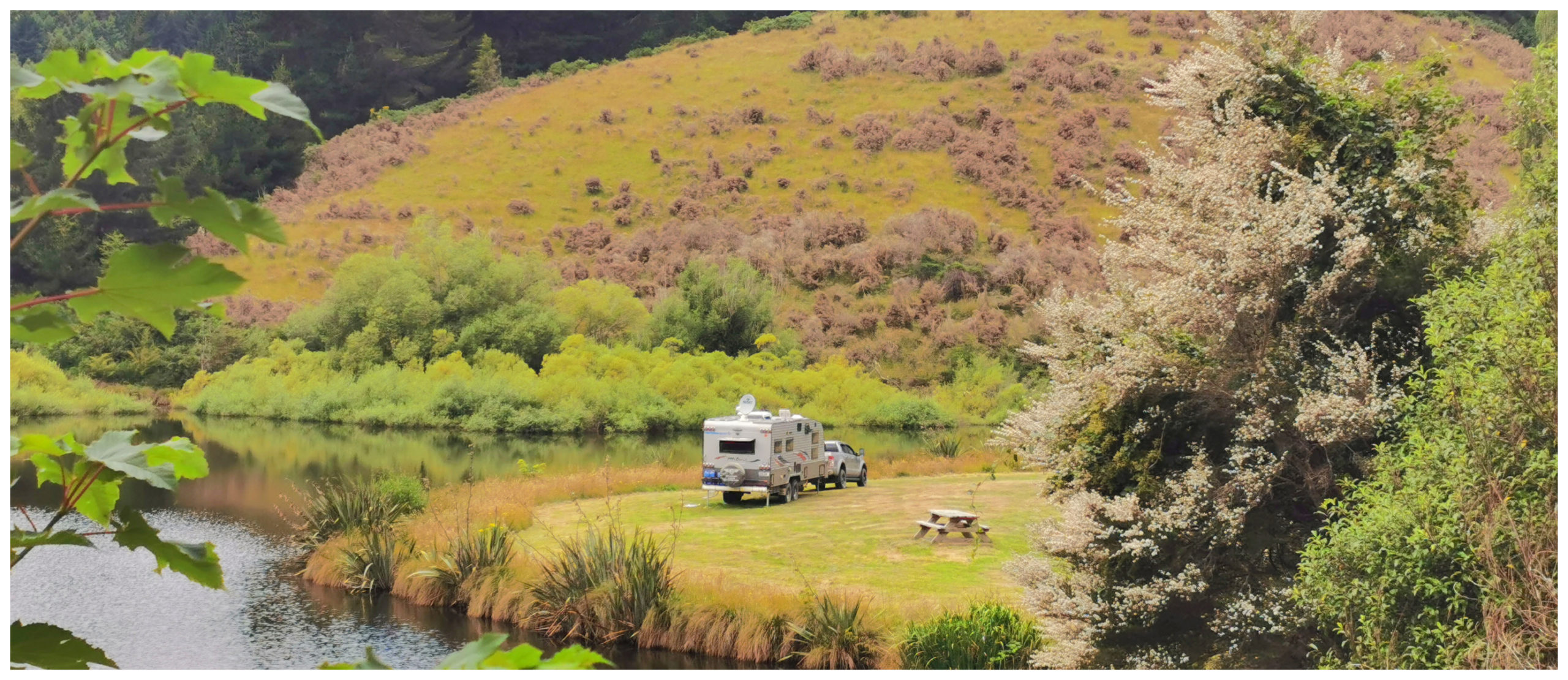
Such a beautiful camping spot beside the dam. Peaceful, serene and plenty of birdlife
Self-contained camping is permissible here for a maximum of 4 nights in any single calendar month.
It is a beautiful spot with the still water of the dam reflecting the vibrant colour of the surrounding tree-lined hills.
It’s hard to believe that this seemingly gentle dam once provided enough hydraulic pressure to blast away entire hillsides to reveal treasures below the surface.
With so much history surrounding us, we were keen to discover some of the walking trails on offer in and around Gabriel’s Gully.
Gabriel’s Gully Interpretation Walk
First on the list was the Interpretation Walk, accessed from the Gabriel’s Gully Carpark. The 2.4km loop track enabled us to explore the gully and read stories of the Goldfield occupants through a series of interpretation panels.
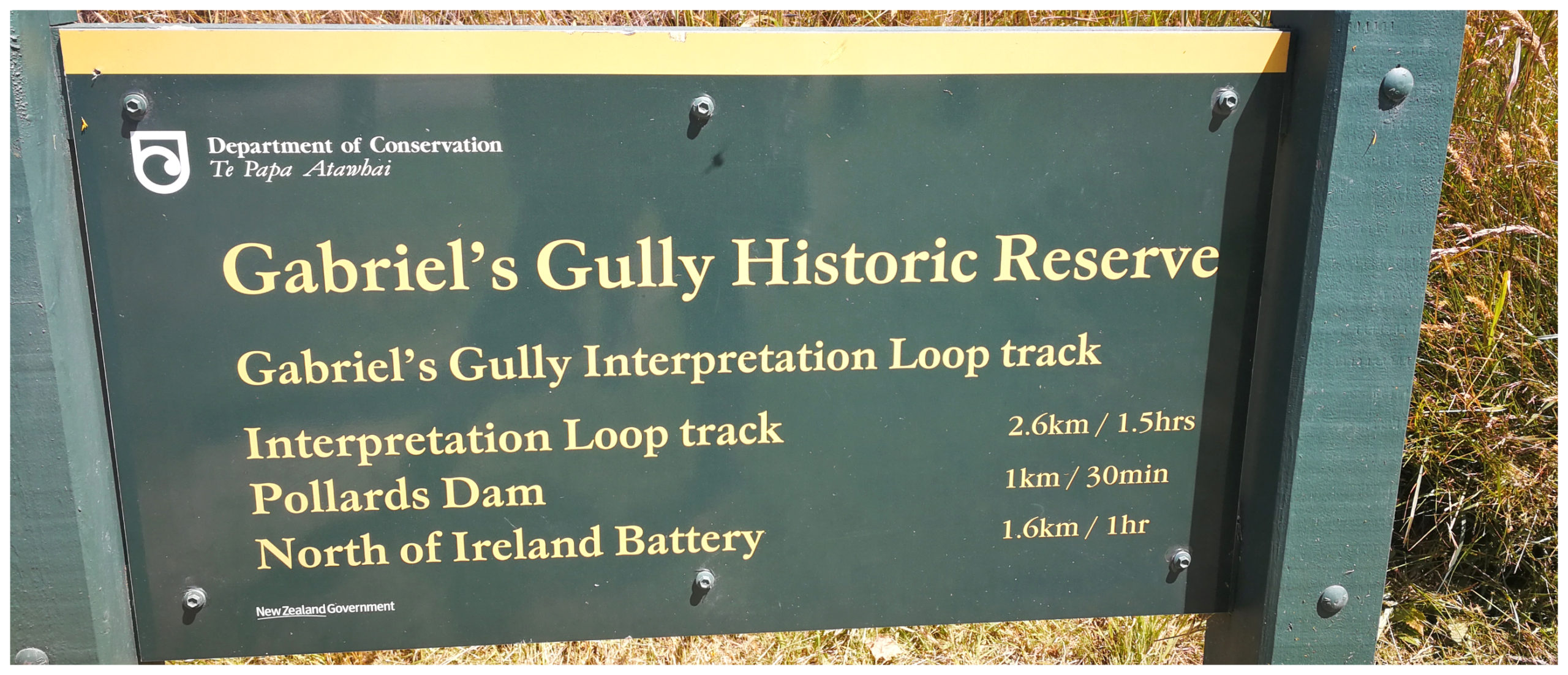
We set off on the Interpretation Loop Track
We traversed a wide valley which is actually an exposed fault line. This was unearthed when they mined the gully, using the power of water to move the shist type rockface.
As we made our way further uphill, we followed old water races, cottage ruins and rusty sluice pipes. We learnt that there were numerous dams dotted around the area. Race-men would use the power of water to blast away the rock to find the gold beneath.
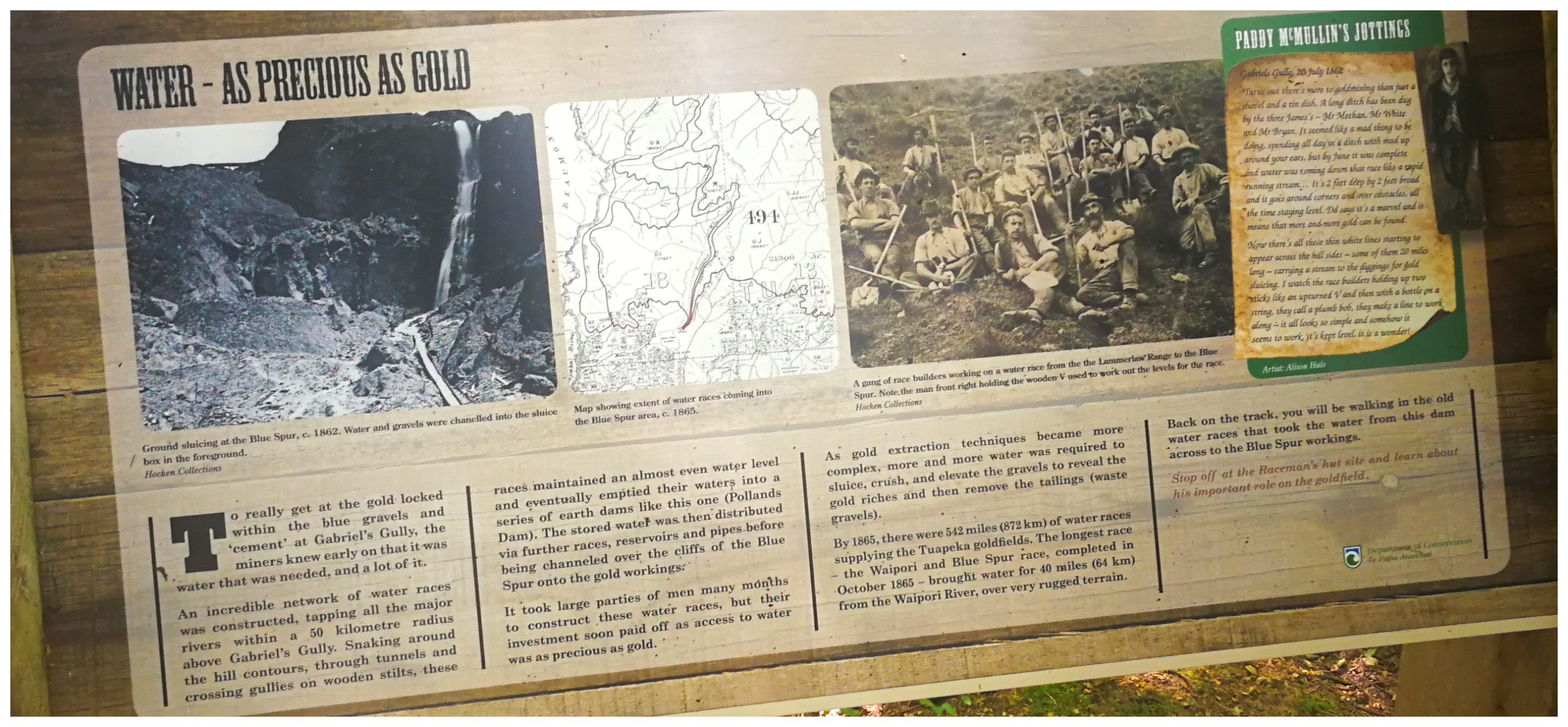
all the Interpretation Panels enhanced our hike around the historic reserve
It was amazing to see the old photos showing tent sites which housed thousands of miners.
We detoured off the main track to visit the remains of the North of Ireland stamper battery (in quite a state of disrepair!).
The entire loop took us around 1.20hr to complete and that was with plenty of photo stops and pausing to read the information panels.

North of Ireland stamper battery and a walk through the forest to the Great Extended Mineshaft.
Otago Dam Track
Located right behind our campsite is the Otago Dam Track.
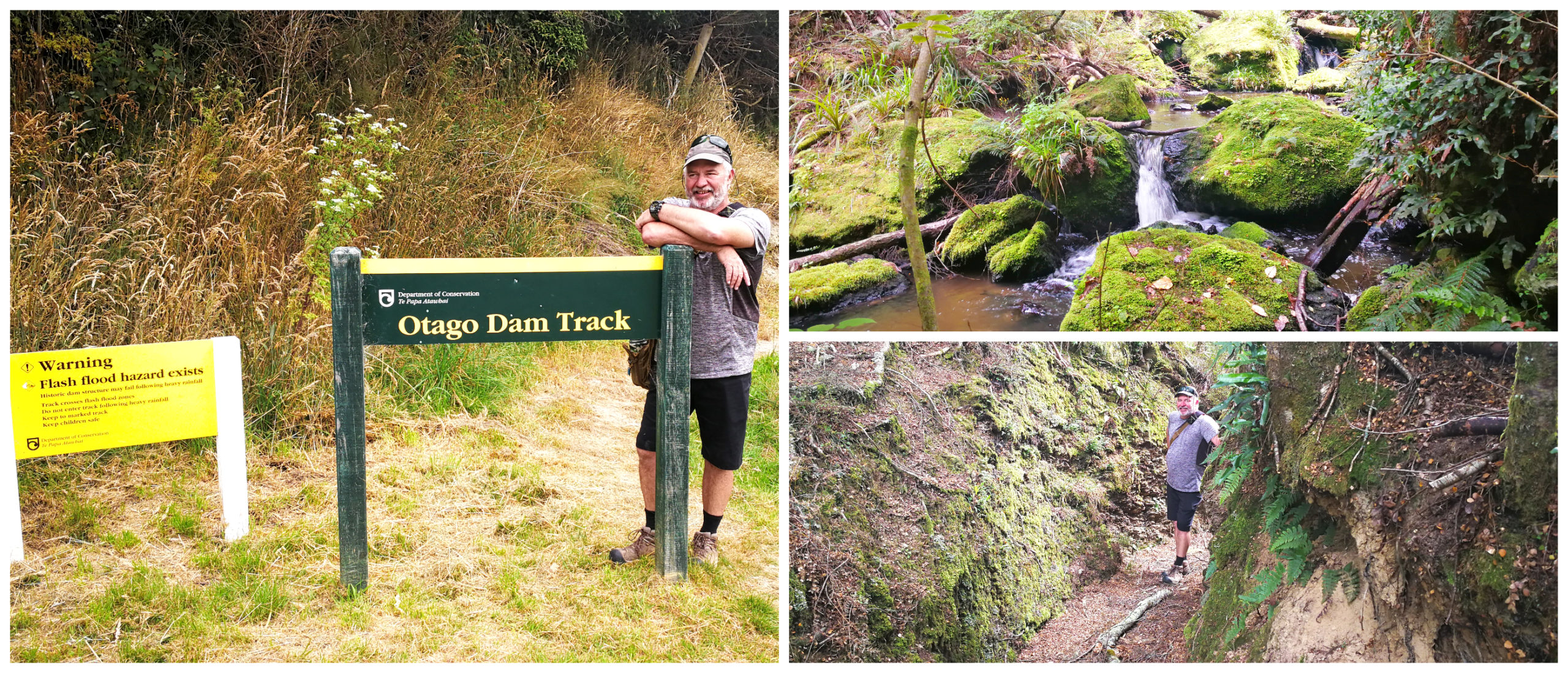
Not recommended during or after heavy rain – subject to flash flooding. The trail follows the water race which was fed from the dam.
This trail is a bit more challenging which covers around 2.7km one way. Once you get to the first stream crossing, it is an uphill slippery slog to get to the top nearer the dam.
After about an hour, we started to see evidence of the once large dam in the heart of Gabriel’s Gully. A water race ran from Otago Dam down the gully to elevate water pressure for the sluicing.
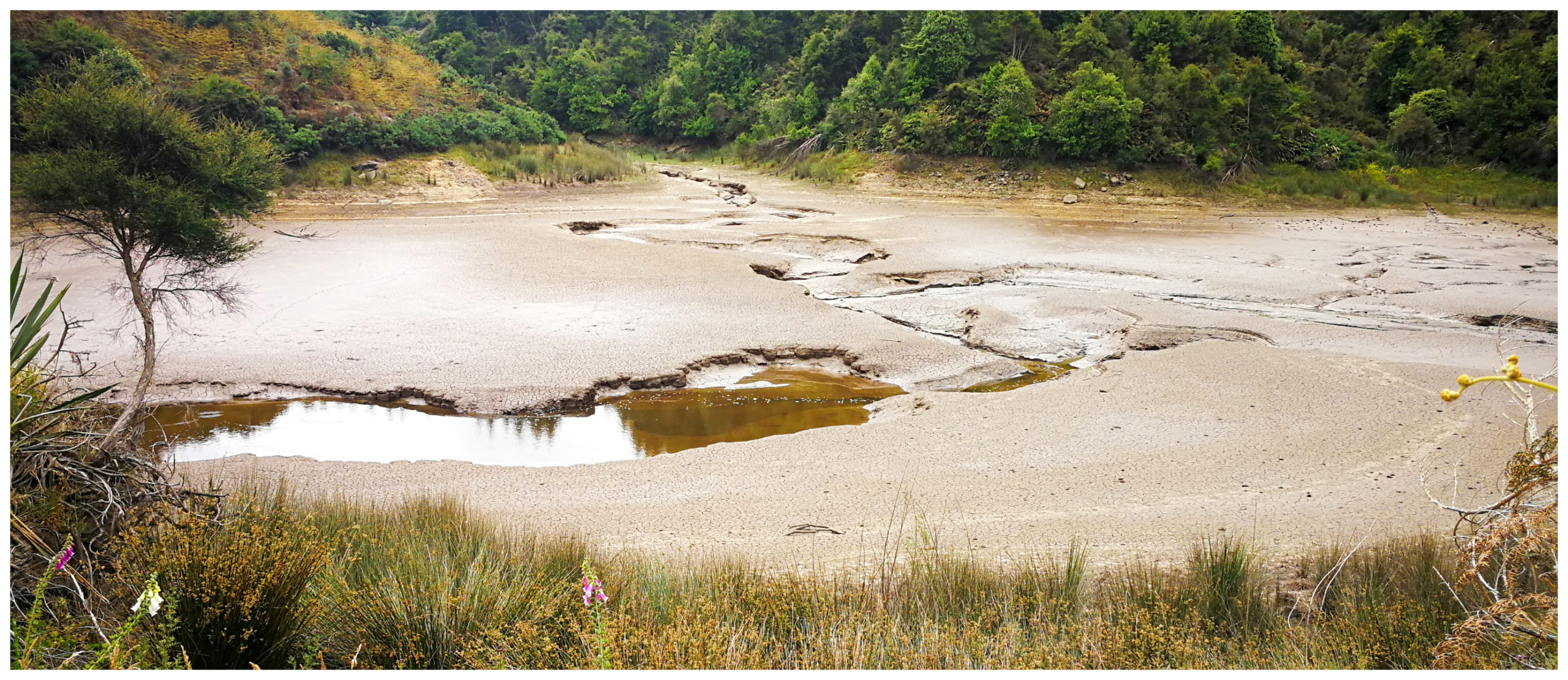
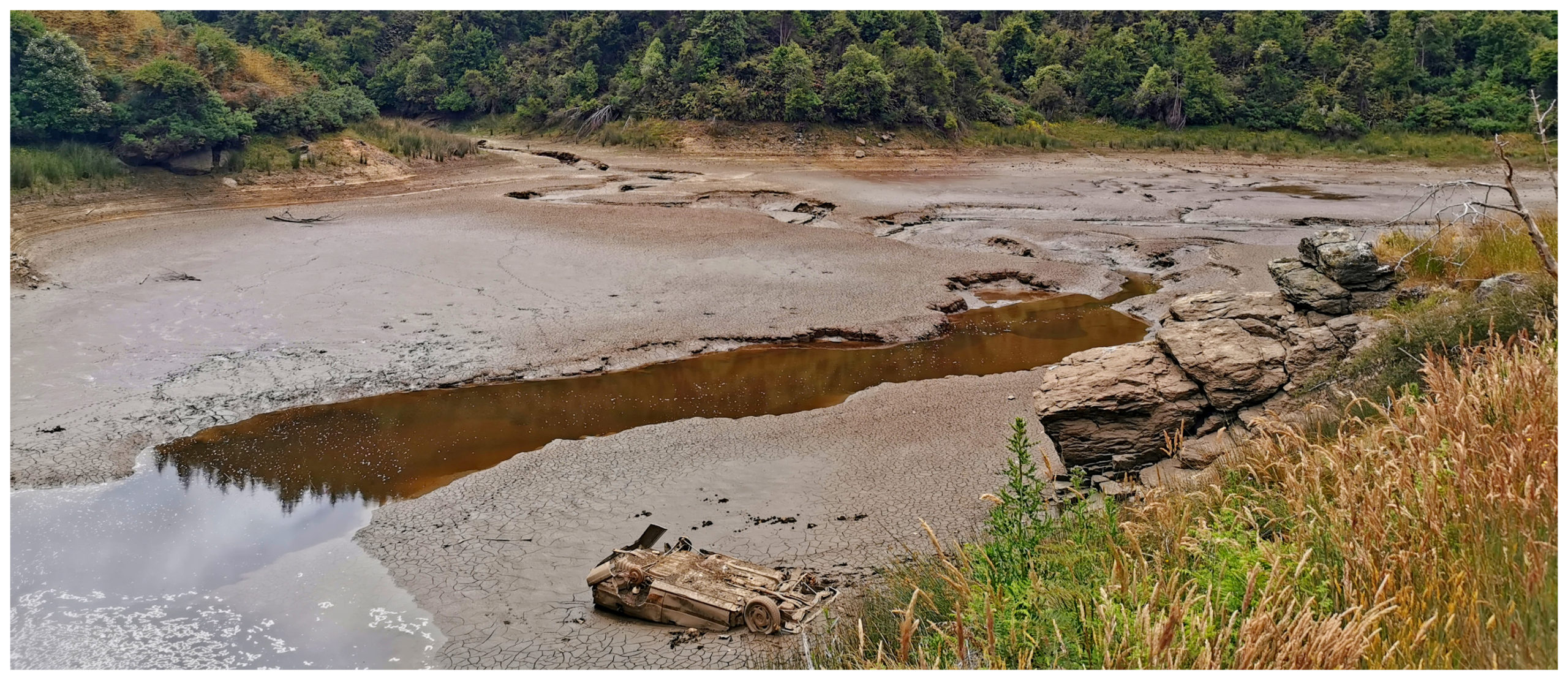
It was difficult to make these dam photos pretty – but you can see how big the original lake must have been
After all the sweating, I have to say that the actual dam was a bit of an anti-climax. The water level was well down leaving muddy and unattractive banks. There was even a wreck of an upturned car. It beggars belief how it even got there as there wasn’t any indication of easy vehicle access to where it lay.
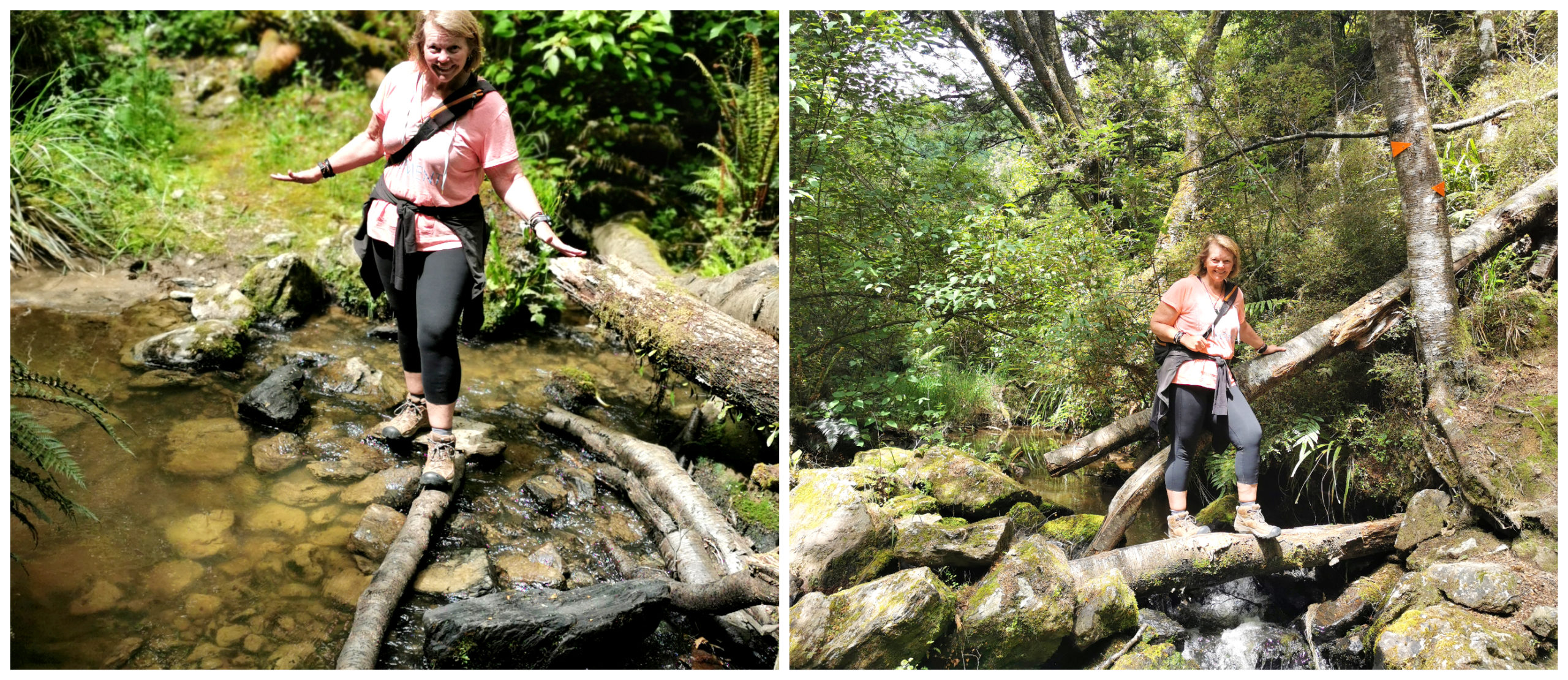
navigating the 6 stream crossings requires co-ordination and balance….not usually my strongest attributes
There are 6 creek crossings in total so could be challenging for those who do not like getting wet socks or slippery rock hopping. Allow for a good 2.5hr round trip.
Blue Spur Township
We jumped in the ute and followed the road signage to the site of the Blue Spur ghost town, located on the hills beyond Gabriel’s Gully.
It was originally located a lot closer to the action in the gully but quickly became ‘in the way’ as it was sitting on the valuable gold-digging ground. They shifted the town to a more ‘out of the way’ spot, away from potential flooding (from all the sluicing) and mining.
As the hunt for gold proved more and more profitable, the township flourished. There were two of every type of store at one stage.
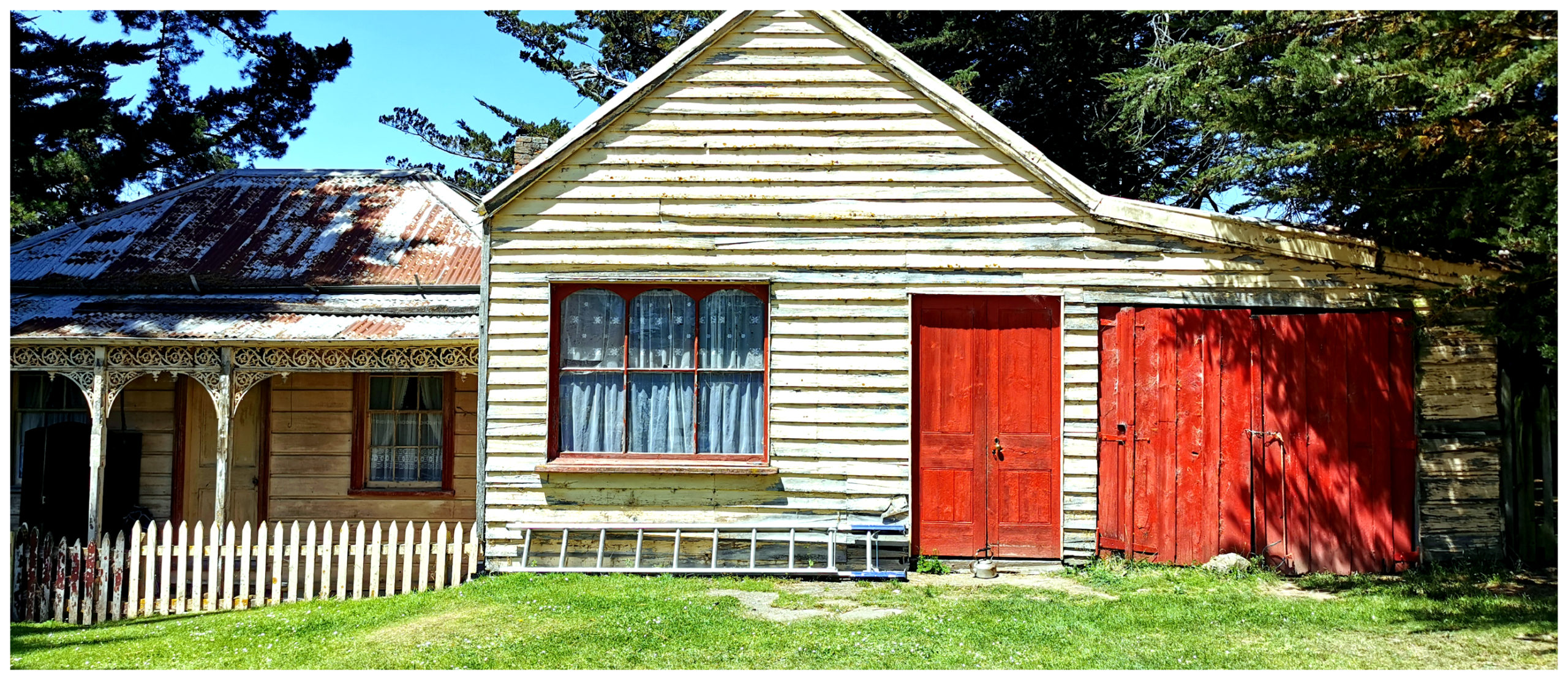
one of the few remaining houses
Nowadays, there isn’t much left of the bustling town. Thankfully a sign explains what was located there and where the buildings were situated. Some of the dilapidated houses that still remain on the side of the road looked uninhabited. They appeared much too run down to possibly house any residents. I did, however, spot a local wandering around one of the properties. She actually looked like she may have been there during the gold-rush days! She certainly wasn’t interested in chatting to any strangers and high-tailed it back to the rear of the property and out of sight.
Clutha Gold Cycle Trail
Another reason why we were camped at Gabriel’s Gully was to cycle the Clutha Gold Cycle Trail which starts (or finishes depending on which way your bike faces) at Lawrence. You will need to wait for the next thrilling instalment to read all about our adventures on the trail.
Click on the link below to see a video of our adventures in and around Lawrence.
